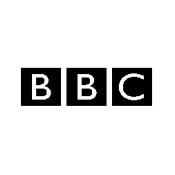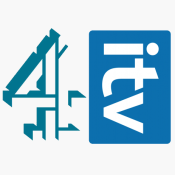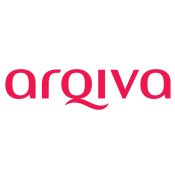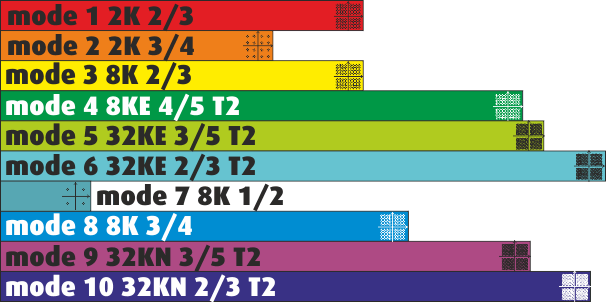Why do the six Freeview "multiplexes" have twenty different names?
 Brian Butterworth published on UK Free TV
Brian Butterworth published on UK Free TV All digital television services - from cable and satellite to terrestrial transmission - were planned and implemented to use the existing "analogue" broadcasting infrastructure.
The engineers who designed the services created digital broadcasting systems that would allow the reliable distribution of bits using the same infrastructure of cables and masts (or satellites) that already carried the analogue services to millions of homes.
Part of the design process allowed for more than one television channel to be carried by the digital system using a long-established data-processing technique called "multiplexing", a word that had, by another route, also come to mean a cinema complex where several films are shown at once on different screens.
It was back in 1996 that Parliament decided that the UK should have a six-multiplex service.
The Broadcasting Act 1996 provided that these "multiplex licences" should be issued for 12 years with a one-time right-to-renew.
Independent Television Commission: 1, 2, A, B, C and D
The regulator at the time, the ITC (Independent Television Commission) said:Of these six multiplexes, two are wholly reserved for existing broadcasters who are guaranteed places on the multiplexes under the Broadcasting Act 1996. The first will be used by the BBC to transmit existing programmes in digital form and develop new digital services. The second is reserved for Channel 3, Channel 4 and Teletext Ltd whose existing services will be reproduced in digital form, and who can use the additional capacity available for new services. This multiplex will be licensed and regulated by the ITC.
Licences to operate the remaining four were advertised and three have now been awarded to British Digital Broadcasting plc (BDB). The fourth multiplex, the third largest in terms of UK coverage, has been awarded to S4C Digital Networks Ltd (SDN). It will carry the new Channel 5, S4C in Wales, and a certain amount of Gaelic programming during peak hours in Scotland.
The ITC named the "wholly reserved" multiplexes 1 and 2, and the others, by the level of coverage: A, B, C and D.

British Digital Broadcasting plc eventually launched their service as ONdigital on 15th November 1998, re-launched as ITV Digital on 11th July 2001 and went out of business on 1st May 2002.
ITV Digital handed back B, C and D multiplex licences to the regulator, who awarded them to the promise of a free-to-air service the BBC and Crown Castle International, a company formed by the privatization of the BBC's transmitter network.
Freeview
 When Freeview started on 30th October 2002, the BBC realised that the existing broadcasting "mode" used for the digital services was causing problems for some viewers. For this reason, some multiplexes changed from "mode 1" to "mode 2" (see the diagram at the end of the article), which provided a more stable signal, but with the loss of some channel capacity. See Freeview modes - a simplified explanation for a longer discussion about this.
When Freeview started on 30th October 2002, the BBC realised that the existing broadcasting "mode" used for the digital services was causing problems for some viewers. For this reason, some multiplexes changed from "mode 1" to "mode 2" (see the diagram at the end of the article), which provided a more stable signal, but with the loss of some channel capacity. See Freeview modes - a simplified explanation for a longer discussion about this.
This was not a problem for the BBC with six full-time television channels to fit onto two whole multiplexes. So, multiplexes 1, B, C and D changed to the robust mode, but 2 and A did not.
Ofcom plans PSBs and COMs
 During the planning for the digital switchover, where the existing analogue channels are turned off over several years, Ofcom, now the regulator used the names PSB1, PSB2, COM4, PSB3, COM5 and COM6 to refer to the six multiplexes.
During the planning for the digital switchover, where the existing analogue channels are turned off over several years, Ofcom, now the regulator used the names PSB1, PSB2, COM4, PSB3, COM5 and COM6 to refer to the six multiplexes.
PSB refers to the "public service broadcasters" (BBC, Channel 3 licence holders - ITV plc, STV and UTV, Channel 4 Corporation, S4C - Sianel Pedwar Cymru, Channel 5 and the "public teletext service".
The PSB multiplexes have almost total coverage of UK homes - 98.5%, and are broadcast from all television masts in the UK, including 1,036 smaller ones that only carry the PSB services.
COM is an abbreviation of "commercial", referring to the two multiplexes held by Arqiva, the company that owns and operates all of the UK television transmitters, and SDN, a company owned by ITV plc.
The COM multiplexes have coverage of around 90%, and are broadcast from the main 81 transmitters.
Because this planning required that all multiplexes move to "mode 3" the post-switchover multiplexes these new descriptions have been widely used to represent the "final" multiplexes, even though legally they are named 1, 2, A, B, C and D - see Ofcom - Multiplex licensees.
The introduction of Freeview HD has seen the BBC change the use of the BBC multiplex to "DVB-T2" mode, and in addition, during 2012 the commercial multiplexes have changed to "mode 8 configuration", which has increased their capacity by another 12.5% - see Changes to commercial multiplex capacity - 2012 timetable .
Eight more names
Digital UK now refers to the multiplex by the name of the ower, usually four letters, but sometimes the written in full, so we now have:Multiplex 1 is also known as PSB1 and also BBCA
 BBCA denotes the first BBC multiplex when in "mode 3", with all the services from "mode 2" multiplexes 1 and B. This multiplex has many regional versions to supply BBC regional news on BBC One.
BBCA denotes the first BBC multiplex when in "mode 3", with all the services from "mode 2" multiplexes 1 and B. This multiplex has many regional versions to supply BBC regional news on BBC One.
Multiplex 2 is also known as PSB2 and also D3+4
 The legal owner is "Digital 3 and 4 Ltd", which is half-owned by the Channel 3 licensee, and half-owned by the Channel 4 Corporation. This multiplex has more than 20 regional versions to supply regional news on ITV 1/STV/UTV, plus advert regions for that station, Channel 4, Channel 5 and the channels 3 and 4 "plus one" services.
The legal owner is "Digital 3 and 4 Ltd", which is half-owned by the Channel 3 licensee, and half-owned by the Channel 4 Corporation. This multiplex has more than 20 regional versions to supply regional news on ITV 1/STV/UTV, plus advert regions for that station, Channel 4, Channel 5 and the channels 3 and 4 "plus one" services.
Multiplex A is also known as COM4 and also SDN
 SDN, originally "S4C Digital Networks" was sold to ITV plc in April 2005 for £134m. The SDN multiplex has two versions, one for Wales, where it carries E4 and one for the rest of the UK.
SDN, originally "S4C Digital Networks" was sold to ITV plc in April 2005 for £134m. The SDN multiplex has two versions, one for Wales, where it carries E4 and one for the rest of the UK.
Multiplex B is also known as PSB3 and also BBCB
Multiplex C is also known as COM5 and also ArqA (or ArqivaA)
 The "mode 3" (now "mode 8") post-switchover ArqA/COM5 multiplex carries all the services on "mode 1" Multiplex C, with space for couple of extra TV channels.
The "mode 3" (now "mode 8") post-switchover ArqA/COM5 multiplex carries all the services on "mode 1" Multiplex C, with space for couple of extra TV channels.
Multiplex D is also known as COM6 and also ArqB (or ArqivaB)
 The "mode 3" (now "mode 8") post-switchover ArqA/COM5 multiplex carries all the services on "mode 1" Multiplex D, with space for couple of extra TV channels, which include 4seven and two subscription channels, Sky Sports 1 and 2.
The "mode 3" (now "mode 8") post-switchover ArqA/COM5 multiplex carries all the services on "mode 1" Multiplex D, with space for couple of extra TV channels, which include 4seven and two subscription channels, Sky Sports 1 and 2.
Freeview standard transmission "modes"

The above diagram illustrates the capacity of different ONdigital/ITV digital/Freeview transmissions over the years. The longer the bar, the more bits are transmitted per second. Mode 2 is 16QAM, mode 7 is QSPK, the DVB-T2 modes are 256QAM, the rest 64QAM.
9:00 PM
I am at a loss to know which transmitter I am getting reception from
freq 474000 10 tv no radio
freq 490000 11tv 11 radio
freq 498000 27 tv 3 radio
freq 538000 20 tv 9 radio
freq 578000 17 tv 1 radio
I thought I was pointing to Crystal Palace but am I getting these from eleswhere?
Would be nice to now
Thanks
| link to this comment |
10:24 PM
Halifax
Tony.Unless you provide a full postcode preferably or nearby location as such,we cannot be of much assistance to you.
| link to this comment |
Mark's: mapM's Freeview map terrainM's terrain plot wavesM's frequency data M's Freeview Detailed Coverage
7:55 AM
Tony: Without more precise information about the location as mentioned by Mark Fletcher I can only guess that, by looking at the frequency information you are currently receiving Mux2 and MuxA from Reigate which were increased in power to 2kW in order to avoid possible interference problems when Rowridge switched over. The other frequencies you mention are all from Crystal Palace.
| link to this comment |
9:05 AM
Intermittent since switch over started we have experienced problems with channels on Mux D / ARQB - Film 4 , Yesterday and ITV4 . All other channels are fine . We are located in RG31 postcode and on the Hannington transmitter .
For example yesterday Sunday 15/4 was particularly bad
We have a roof top ariel which is less than 3 years old and was installed by a professional company. Signal has been fine up until switch over .
We haven't added or moved any VCR , game console or similar device in that period .
Any suggestions welcome ?
| link to this comment |
Jim: SDN (ITV3 etc) and ArqB are on low power from Hannington until Wednesday. They do not change channel on that date so no retune should be necessary.
The reason for this is because Guildford transmitter uses the same channels until it completes switchover on Wednesday.
| link to this comment |
1:10 PM
Tony: This site and all other documentation works on UHF channel numbers rather than frequencies. To convert from frequency in kHz to channel number, subtract 306000 and divide by 8000. Then round up or down to the nearest whole number - if you have to round up write a '-' after the channel number, if down, write a '+'.
Your list:
474000 = C21 = Reigate Mux 2
490000 = C23 = CP BBC A
498000 = C24 = Reigate Mux A
538000 = C29 = CP Mux D
578000 = C34 = CP Mux C
My guess is that you have a box with the naive tuning algorithm: just storing the first version of the channels found when scanning from lowest to highest frequencies. The list above is the lowest frequency that each service uses. (You omitted Mux B but most services now live on BBC A.)
If this is the case, after the second stage retune on Wednesday you're likely to get the commercial muxes from Reigate - but perhaps not reliably - and the PSBs from Crystal Palace.
See Digital Region Overlap for thoughts on how to fix this.
| link to this comment |
2:17 PM
Thank you for your comments and help
I did try to find out whether any of the signals were from caterham transmitter but was not able to see what the frequencies are from that transmitter.
Twin aerial is pointing directly toward CP North of here, caterham is almost in line, if the other signals are from Reigate then these must be coming in at right angles
We receive all the channels [most of the time].
Interesting to see what happens on Wednesday.
| link to this comment |
Tony: The page for the transmitter is here - Caterham digital TV transmitter | ukfree.tv - independent free digital TV advice - or see the blue underlined link in your post.
| link to this comment |
2:46 PM
Swanley
Hi guys Post Code BR8 7LH
Haven't been in touch since last year when I purchased a box and got "no signal" message
Now switched over purchased cheap box and installed OK but picture has distortion and sound has hum.Can get all channels and signal says 90%. Tried a couple of different
TVs and scart leads.Have a cheap Freeview TV
which works OK. Should I buy a dearer box ?
Yours Dave Taylor
| link to this comment |
David's: mapD's Freeview map terrainD's terrain plot wavesD's frequency data D's Freeview Detailed Coverage
1:03 AM
London
Hi, I have lost all ArqB/MUX D channels on my digibox since the London switchover. I've tried a first time installation, doing the unplug the aerial cable and scan with no signal etc procedure and still nothing. I am feeling deprived as I have no film4 and yesterday. I live in Central London and am hoping the problem will "right itself" but having rescanned a number of times since yesterday morning, I'm not holding out much hope. Any advice would be welcome, ta!
| link to this comment |
Ami's: mapA's Freeview map terrainA's terrain plot wavesA's frequency data A's Freeview Detailed Coverage